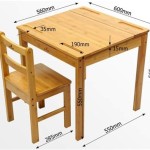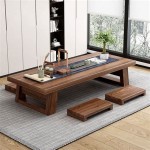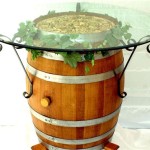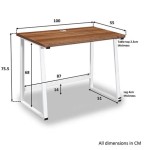Modern Pedestal Dining Table Base: A Comprehensive Guide
The modern pedestal dining table base represents a significant design departure from traditional four-legged tables. Its single supporting structure, often centrally located, offers a visually appealing alternative that maximizes legroom and enhances the overall dining experience. This article will explore the various aspects of modern pedestal dining table bases, including their design considerations, material options, structural integrity, and aesthetic integration within contemporary dining spaces.
The rise in popularity of pedestal dining tables is closely linked to the evolving preferences in modern interior design. Where traditional tables often prioritize symmetry and formal arrangements, pedestal tables offer a more fluid and adaptable solution. The absence of corner legs creates a sense of openness, allowing for greater flexibility in seating arrangements and accommodating more diners comfortably around the table's perimeter. This freedom of movement and the unobstructed view of the surrounding space contribute to a more relaxed and inviting dining atmosphere.
Design Considerations for Modern Pedestal Table Bases
Designing a modern pedestal dining table base involves a complex interplay of structural engineering, aesthetic considerations, and ergonomic factors. The primary goal is to create a stable and supportive foundation for the tabletop while maintaining a visually appealing and unobtrusive design. Several key factors influence the overall design process.
The shape and size of the tabletop are fundamental considerations. A larger and heavier tabletop will require a more robust and stable base to prevent wobbling or tipping. The weight distribution of the tabletop also plays a crucial role. An elliptical or rectangular tabletop, for instance, may require a wider base or a more complex internal structure to ensure adequate support across its entire surface. The designer must carefully calculate the load-bearing capacity of the base to ensure it can safely support the tabletop weight and any additional weight placed on the table during use.
Ergonomics are also important. The height of the pedestal base must be carefully chosen to ensure comfortable legroom for diners. The base should not impede the natural movement of chairs around the table. The design should also minimize the risk of accidental bumps or scrapes against the base. The overall dimensions of the base should be proportional to the tabletop, creating a visually harmonious and balanced composition. A base that is too small will appear fragile and unstable, while a base that is too large can overwhelm the tabletop and detract from the overall aesthetic.
Aesthetic considerations are paramount in modern design. The pedestal base should complement the style and materials of the tabletop and the surrounding dining space. Clean lines, geometric shapes, and minimalist forms are common characteristics of modern pedestal table bases. The use of contrasting materials, such as metal and wood, can create visual interest and add a touch of sophistication. The designer should also consider the overall color palette of the dining room and choose a base finish that complements the existing décor. The pedestal base should not only be functional but also serve as a design element that enhances the overall aesthetic appeal of the dining area.
The base's footprint on the floor is another key design consideration. A smaller footprint maximizes usable floor space, particularly in smaller dining areas. However, a smaller footprint also requires a more carefully engineered base to maintain stability. Designers often employ clever structural solutions, such as weighted bases or internal bracing, to achieve stability without sacrificing space. The shape of the base can also influence its footprint. Circular bases tend to have a smaller footprint than rectangular or square bases, making them a popular choice for smaller dining tables.
Material Options for Modern Pedestal Table Bases
The choice of material for a modern pedestal dining table base significantly impacts its appearance, durability, and cost. A wide range of materials are available, each with its unique set of properties and aesthetic characteristics. The selection process should consider the desired style, the intended use of the table, and the overall budget.
Metal is a popular choice for modern pedestal table bases due to its strength, durability, and versatility. Steel, particularly stainless steel, is a common option for its resistance to corrosion and its sleek, contemporary appearance. Metal bases can be powder-coated in a variety of colors to match any décor. Aluminum is another option, offering a lightweight alternative to steel. It is often used for bases with intricate designs or for tables that need to be easily moved. Metal bases are typically welded or bolted together, creating a strong and stable structure that can withstand heavy use.
Wood offers a warmer and more traditional aesthetic than metal. Solid wood bases can be crafted from a variety of hardwoods, such as oak, maple, and walnut. Each wood species has its unique grain pattern and color, adding character and depth to the base. Wooden bases can be stained or painted to match the tabletop or other furniture in the dining room. Wood bases require careful construction to ensure stability and prevent warping or cracking over time. The wood must be properly seasoned and dried before use to minimize the risk of moisture-related problems. Laminated wood or plywood can also be used for pedestal bases, offering a more cost-effective alternative to solid wood. These materials are often used for bases with curved or complex shapes.
Concrete is an increasingly popular choice for modern pedestal table bases, particularly in industrial or minimalist designs. Concrete bases are incredibly strong and durable, providing a solid and stable foundation for the tabletop. Concrete can be molded into a variety of shapes and sizes, allowing for unique and sculptural designs. Concrete bases can be left in their natural gray color or stained to achieve a different hue. The weight of concrete is a significant factor to consider. Concrete bases are typically very heavy, making them difficult to move. However, this weight also contributes to their stability. Concrete bases are often sealed to protect against stains and water damage.
Acrylic and other synthetic materials offer a lightweight and versatile option for modern pedestal table bases. These materials can be molded into a wide range of shapes and colors, allowing for highly customized designs. Acrylic bases are often translucent or transparent, creating a visually striking effect. They are also relatively easy to clean and maintain. However, acrylic bases may not be as durable as metal or wood bases and may be more susceptible to scratches or damage. The use of recycled materials in the construction of pedestal bases is also gaining traction, reflecting a growing concern for sustainability in design.
Structural Integrity and Stability of Pedestal Table Bases
The structural integrity and stability of a modern pedestal dining table base are paramount to its functionality and safety. A poorly designed or constructed base can lead to wobbling, instability, and even collapse, posing a significant risk to users. Several factors contribute to the overall stability of a pedestal table base.
The base's footprint, or the area it covers on the floor, is a critical factor in determining its stability. A wider footprint generally provides greater stability, particularly for larger or heavier tabletops. However, a wider footprint can also take up more floor space, which may not be desirable in smaller dining areas. Designers often employ various strategies to maximize stability while minimizing the footprint, such as using weighted bases or incorporating internal bracing.
The distribution of weight within the base is also important. A base with a low center of gravity will be more stable than one with a high center of gravity. This is because a lower center of gravity makes it more difficult to tip the table over. Weight can be added to the base to lower its center of gravity, or the base can be designed with a wider bottom and a narrower top to achieve the same effect.
The connections between the base and the tabletop are crucial for ensuring stability. These connections must be strong and secure to prevent the tabletop from shifting or wobbling. Various methods can be used to attach the tabletop to the base, including screws, bolts, and adhesives. The choice of method will depend on the materials used for the tabletop and the base. For instance, wooden tabletops can be easily attached to wooden bases using screws, while metal tabletops may require welding or bolting to a metal base. The number and placement of the connections are also important. More connections generally provide greater stability, and the connections should be evenly distributed around the perimeter of the tabletop to prevent uneven loading.
The material properties of the base are critical to its structural integrity. The material must be strong enough to support the weight of the tabletop and any additional weight placed on the table during use. The material must also be resistant to bending, warping, and cracking. The choice of material will depend on the size and weight of the tabletop, as well as the desired aesthetic. Metal bases are generally stronger and more durable than wood or acrylic bases, but they may also be heavier and more expensive. Wooden bases offer a warmer and more traditional aesthetic but may require more maintenance to prevent warping or cracking. Acrylic bases are lightweight and versatile but may be more susceptible to scratches or damage.
Finally, the design of the base itself plays a significant role in its structural integrity. A well-designed base will distribute weight evenly and minimize stress points. The base should be designed to resist bending, twisting, and compression. Complex shapes and intricate designs can add visual interest but may also weaken the base's structure. Designers must carefully balance aesthetic considerations with structural requirements to create a base that is both beautiful and functional. Computer-aided design (CAD) software is often used to analyze the structural performance of pedestal table bases and identify potential weaknesses. This allows designers to optimize the design for maximum strength and stability.

Buy Table Base H28 Metal Dining Kitchen Steel Pedestal Furniture Legs Flowyline Design 303 Namu In

Round Pedestal Base Dining Table Reclaimed Wood Alabama Sawyer

51 Pedestal Dining Tables That Offer Maximum Style And Chair Space

51 Pedestal Dining Tables That Offer Maximum Style And Chair Space

Modern Dining Table Midcentury Wood On Pedestal Base Walnut Oval With Sarita Edge

Walker Edison 48 Modern Pedestal Base Round Dining Table Black Com

Table Base 303 Namu 28h For Glass Dining Top Flowyline Design

Modern Table Base Pedestal Dining Metal Coated Height Pedesta Tavolo Moderno Tavoli In Metallo Basi Per

Armen Living Cirque 54 In Walnut Wood Mid Century Modern Pedestal Round Dining Table With Black Metal Base Lccqdiwa The Home Depot

Table Base 304 Dentro 28h For Dining Design Furniture Flowyline








